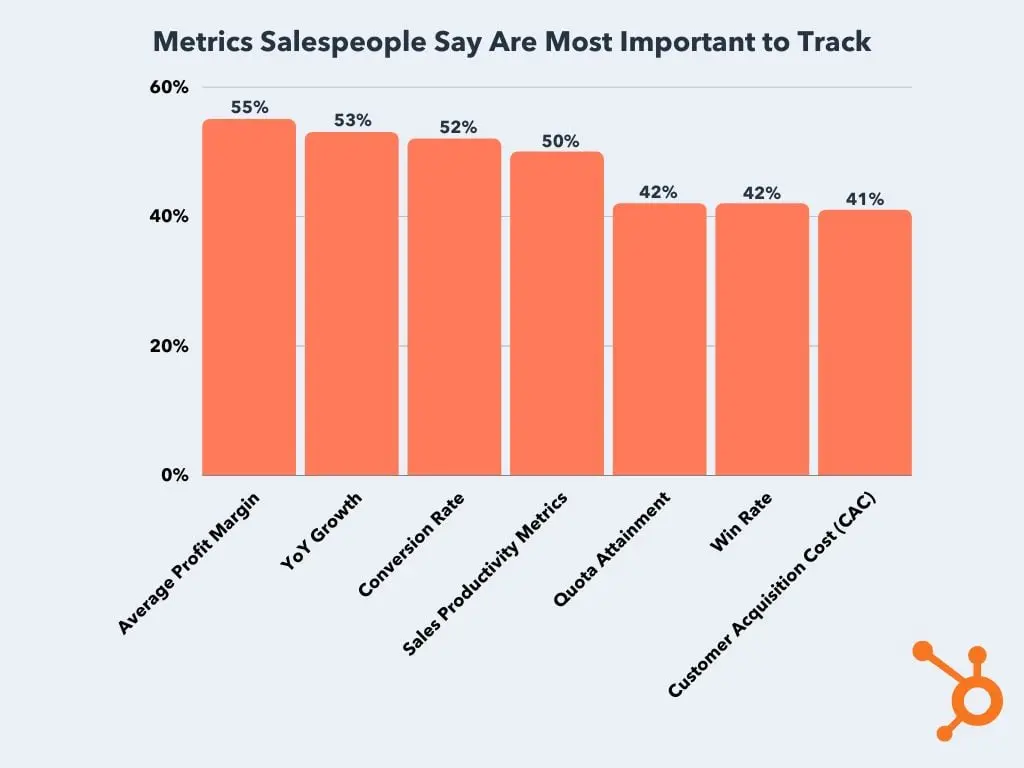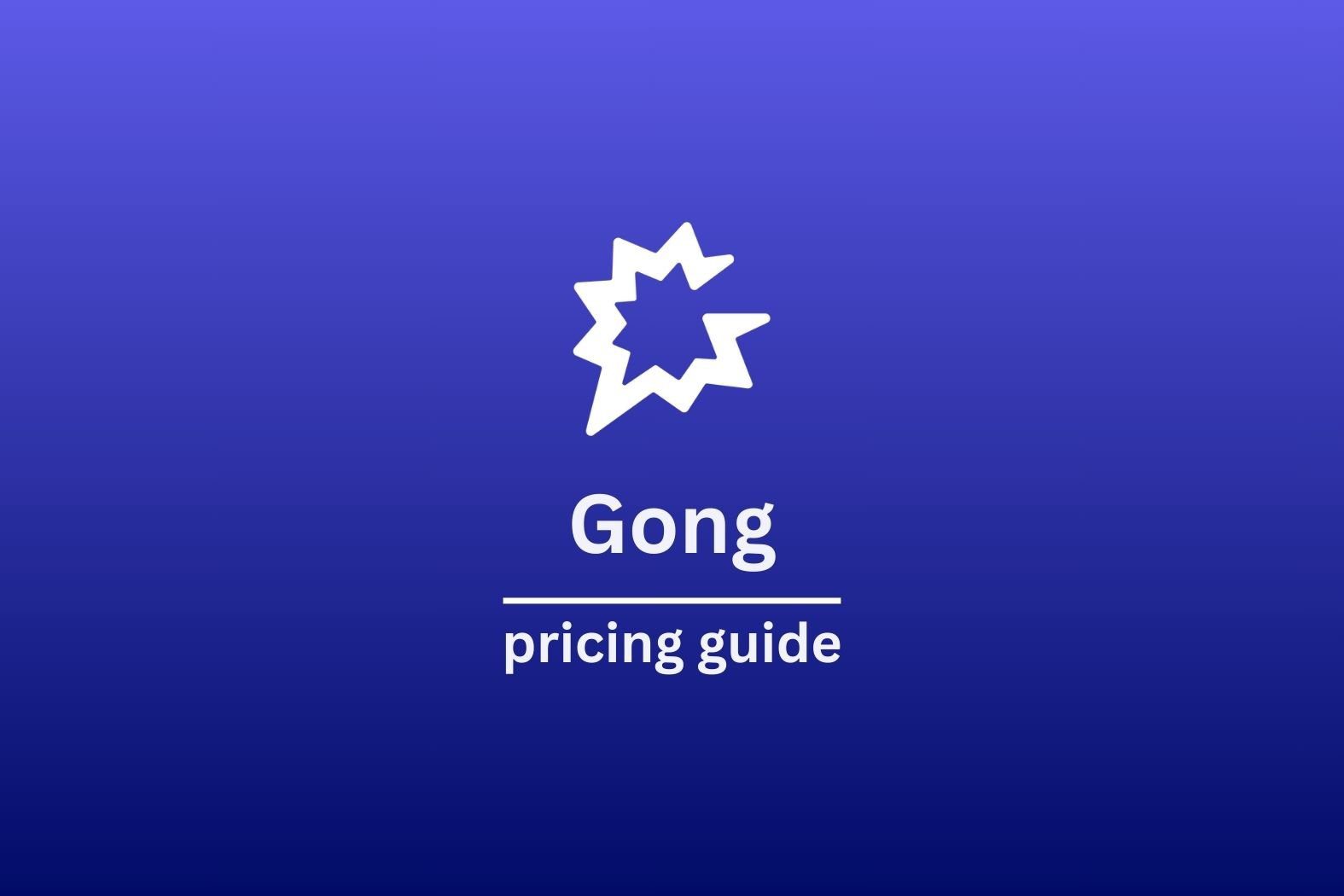Todos sabem que uma revisão de vendas é quando você se senta com um de seus representantes de vendas e avalia o desempenho dele com base em critérios preestabelecidos. Mas nem todos sabem como conduzir bem uma avaliação de vendas.
Quando dizemos bem, é claro, queremos dizer de uma forma que melhore seus processos de vendas existentes, eleve o desempenho de sua equipe de vendas e o ajude a identificar claramente as áreas a serem melhoradas no futuro.
Ao final deste artigo, você saberá exatamente como analisar o desempenho para aprimorar seus processos de vendas.
"Todos nós precisamos de pessoas que nos dêem feedback. É assim que melhoramos."
Bill Gates Tweet
Metodologias de análise de vendas
Metodologias de análise de vendas são a espinha dorsal de sua análise. Elas fornecem estrutura e contexto ao avaliar o desempenho da sua equipe, permitindo que você separe os problemas, destaque os sucessos e, por meio de decisões baseadas em dados, apoie o crescimento da sua equipe.
Aqui estão algumas das metodologias mais comumente usadas:
Análise de ganhos e perdas
Em termos simples, essa metodologia consiste em descobrir por que um negócio foi ganho ou perdido. Esse conhecimento lhe dá a chance de replicar (no caso de vitórias) ou evitar (no caso de perdas) as mesmas etapas no futuro.
Normalmente, as negociações de vendas anteriores são analisadas sob a perspectiva do vendedor e do comprador. Isso ajuda você a entrar na cabeça deles para descobrir o que deu certo e o que não deu tão certo. O ideal é que você faça análises de ganhos e perdas cerca de 2 a 4 semanas após cada negócio fechado. Você pode fazê-las em lotes para facilitar o processo.
Ao analisar os dados para sua revisão de vendas, você provavelmente começará com uma relação de ganhos e perdas. Isso pode ser monitorado de representante para representante para ver como eles estão melhorando ao longo do tempo. Entretanto, uma maneira mais avançada de fazer isso seria rastrear a taxa de vitórias competitivas de seu representante (a taxa na qual ele fecha o negócio antes de pelo menos um concorrente). Isso permite que você aproveite dados mais complexos sobre quais táticas usar quando o cliente potencial estiver dividido entre a sua marca e um concorrente específico.
Revisão do pipeline
O principal motivo para realizar uma revisão do pipeline é avaliar e priorizar as oportunidades de vendas que seus representantes alinharam. Se houver algo impedindo que os clientes potenciais passem para o próximo estágio do pipeline, isso ficará evidente aqui e você poderá resolvê-lo rapidamente.
É essencial monitorar o gerenciamento do pipeline para que você entenda a jornada do cliente desde o primeiro contato até a integração. Você pode acompanhar as principais métricas, como a taxa de conversão de leads e o custo de aquisição de clientes, para ajudá-lo também na revisão do pipeline. Você perceberá tendências durante os diferentes estágios, o que lhe permitirá ser muito específico sobre como seus representantes de vendas devem proceder.
Salesforce recomenda fazer pelo menos duas revisões de pipeline por mês e garantir que sejam individuais e não para toda a equipe. Isso garante que você concentre a atenção em negócios específicos e não em conceitos gerais.
Avaliações de ofertas
Uma análise do negócio é uma reunião entre você e um de seus representantes, na qual você analisa os negócios individuais para descobrir a probabilidade de concretizar uma venda e que tipo de estratégias você pode usar para fazer com que o negócio avance. O objetivo é garantir que os negócios não caiam no último obstáculo.
Análise de métricas de desempenho
A análise de métricas de desempenho é o processo de examinar cada indicador-chave de desempenho individual para avaliar o desempenho de seus representantes de vendas. Em particular, você deseja avaliar a qualidade e a quantidade de seus negócios, bem como sua eficiência e produtividade gerais.
Métricas como taxa de conversão de leads, tamanho médio dos negócios e duração do ciclo de vendas podem lhe dar indicações sobre o desempenho de seus representantes de vendas. O acompanhamento dessas métricas o ajuda a fazer os ajustes de vendas necessários para ajudar sua equipe a atingir as metas de trabalho. Você pode usar ferramentas de relatório como o Funnel ou alternativas para começar a acompanhar e monitorar essas métricas.
Análise SWOT
A análise SWOT(Strengths, Weaknesses, Opportunities, and Threats, pontosfortes, pontos fracos, oportunidades e ameaças) é uma técnica para avaliar sua equipe de vendas nesses quatro componentes. A análise ajuda a avaliar os pontos fortes e fracos de sua equipe, enquanto as oportunidades e ameaças são fatores externos que devem ser lembrados e atualizados regularmente.
A análise SWOT é excelente para identificar as principais áreas de melhoria por meio de um melhor autoconhecimento. Se você deseja um planejamento estratégico aprimorado, uma melhor tomada de decisões e o uso eficiente dos recursos de sua equipe, a aplicação regular da análise SWOT manterá sua equipe sob controle.
Para obter mais detalhes, confira o exemplo de uma análise SWOT abaixo!

Revisões trimestrais de negócios
As revisões trimestrais de negócios envolvem uma análise abrangente do desempenho de vendas da sua equipe, da progressão das metas e das estratégias implementadas. Elas podem ser feitas diretamente para as vendas, mas também costumam envolver colaboração multifuncional com marketing, desenvolvimento de produtos e outros departamentos.
É uma ótima maneira de destacar as melhores partes do trimestre, bem como as partes em que você poderia ter se saído melhor. Isso abre uma oportunidade de oferecer soluções práticas para completar todo o processo. Concentre-se nos KPIs, nas questões de reflexão e nas estratégias futuras para continuar a melhorar seu sucesso geral.
O papel dos dados nos processos de revisão de vendas
Os dados são a força vital de sua análise de vendas. Use-os com sabedoria para descobrir insights brutos sobre os vários estágios de seu pipeline de vendas. O que precisa ser melhorado? O que está funcionando tão bem que você deve evitar tocar a todo custo? Os dados lhe dirão...
Em particular, os dados permitem que você:
- Acompanhe os KPIs. O rastreamento de KPIs fornece os melhores insights sobre a eficácia de suas estratégias de vendas. Ele também ajuda a identificar as áreas a serem aprimoradas, possibilitando uma melhor tomada de decisões.
- Analisar o pipeline. Ao analisar o pipeline, você está se concentrando em cada um dos estágios da venda. Isso o ajuda a identificar gargalos e áreas de força, mas também problemas que precisam ser resolvidos.
- Use metodologias. Os dados dão vida às metodologias de vendas! Eles mostram quais métodos estão trazendo sucesso de forma consistente, orientam a sua equipe sobre onde melhorar e apresentam um quadro claro do que os clientes realmente querem.
- Previsão de vendas. Sem dados, seria quase impossível fazer uma previsão precisa. Tudo o que você teria seria um palpite. Existem vários métodos diferentes de previsão de vendas que podem ser usados com os dados corretos, e eles permitem que você planeje o futuro com eficiência.
- Dê feedback. Os dados orientam o feedback que você fornece à sua equipe. Você pode usar métricas de desempenho para dar conselhos com base em evidências que alguém possa entender e colocar em prática imediatamente.
Principais métricas para acompanhar o sucesso pós-implementação
Se você já se perguntou se suas revisões de vendas estão realmente fazendo a diferença, a resposta está nas métricas. Acompanhe o desempenho após uma revisão de vendas para ver em primeira mão se os insights estão se traduzindo em resultados tangíveis.
No infográfico abaixo, você verá as métricas que os próprios vendedores acreditam ser as mais importantes para acompanhar e melhorar!

Vamos dar uma olhada mais profunda nas principais métricas a serem monitoradas após a implementação das análises de vendas.
- Margem de lucro média. A margem de lucro média compara a porcentagem de vendas em relação aos lucros reais que você obteve.
- Crescimento anual. O crescimento ano a ano se concentra no desempenho financeiro de sua empresa em comparação com exatamente um ano atrás, no mesmo mês.
- Crescimento da receita. Você pode medir o aumento no crescimento geral da receita gerada depois de ter feito suas revisões.
- Taxa de conversão de leads. Você pode acompanhar a porcentagem de leads que se convertem em clientes após a implementação de melhorias.
- Taxa de retenção de clientes. Depois de ajustar suas estratégias, medir a porcentagem de clientes que você reteve é um indicador real da fidelidade do cliente.
- Valor do tempo de vida do cliente. Ao avaliar o valor total que um cliente contribui após a implementação, você pode ter uma boa ideia dos níveis de satisfação do seu cliente.
- Duração do ciclo de vendas. A duração de seus ciclos de vendas é um indicador importante de como seu pipeline é contínuo.
- Custo de aquisição de clientes. Certifique-se de que está monitorando os níveis de custo necessários para adquirir novos clientes. Se ainda for alto após a implementação, talvez seja melhor começar a analisar a qualidade.
- Pontuação do promotor líquido. Se os clientes estiverem recomendando seu serviço ou produto, você será recompensado com uma pontuação alta no NPS. No entanto, se você estiver procurando maneiras de aumentar a satisfação e a fidelidade do cliente, entender como melhorar o Net Promoter Score pode ajudá-lo a tomar medidas estratégicas para aumentar o envolvimento e gerar melhores resultados.
Como fazer uma análise de vendas
É muito bom saber quais dados rastrear e quais metodologias usar, mas como você realmente faz uma análise de vendas?
Aqui estão algumas diretrizes básicas:
- Reunir informações. Colete todos os seus dados de vendas para o período de análise escolhido (por exemplo, semanal, mensal, trimestral).
- Analisar o desempenho das vendas. Compare os números de vendas de seus representantes com as metas estabelecidas. Nesse processo, selecione os representantes com melhor desempenho e aqueles que precisam de um empurrãozinho na direção certa!
- Crie uma estrutura e um esboço. Resuma todas as suas descobertas e crie uma análise que discuta: desempenhos, metas versus realidade, desafios e quais são as próximas etapas para melhorar o desempenho do seu representante de vendas.
- Revisão do rascunho. Pense em como você apresentará seu rascunho. Como você o entregará aos seus representantes de vendas para causar o maior impacto possível?
- Apresente a revisão. Apresente e compartilhe a revisão com cada membro da sua equipe. Examine cada seção e realmente enfatize as melhores maneiras de melhorar continuamente.
Como fazer uma análise de vendas com processos melhores
Sejamos realistas: qualquer pessoa pode seguir as cinco etapas simples acima e criar uma análise de vendas padrão. Mas você quer mais do que isso!
Como você cria uma revisão de vendas com melhores processos de vendas?
- Enquadre-a de forma positiva. A crítica pode ser difícil na melhor das hipóteses, portanto, quando estiver fazendo uma crítica durante uma avaliação de desempenho de vendas, certifique-se de que seja uma crítica construtiva que se concentre em aprender com os erros em vez de colocar a culpa. Dessa forma, você pode sugerir melhorias e, ao mesmo tempo, manter o moral elevado.
- Seja flexível. Nas revisões de vendas, você precisa ser adaptável. As métricas nas quais você se concentra podem mudar com o tempo. Por exemplo, talvez alguém esteja tendo dificuldades para converter leads, então adapte um plano com base nos dados para acompanhar a taxa de conversão de leads para a próxima vez.
- Defina objetivos acionáveis. Sempre que realizar uma revisão de vendas, certifique-se de que as ações definidas para sua equipe sejam acionáveis e fáceis de seguir. Ao definir objetivos claros, você coloca todos na mesma página instantaneamente. Verifique isso perguntando se tudo está claro antes de deixá-los ir. Melhor ainda, peça que eles recitem as etapas para você com suas próprias palavras.
- Reflita sobre o sucesso. É uma ótima prática começar suas análises de vendas com tudo o que deu certo no período analisado. Refletir, discutir e dissecar o sucesso cria um precedente para o sucesso futuro! Seja específico com relação às metas alcançadas para que os representantes sintam que realizaram algo de que devem se orgulhar. Isso também pode levar aos seus primeiros objetivos para o novo período: mais do mesmo! Se não estiver quebrado, não conserte.
- Incentivar a autorreflexão. Provoque a reflexão e faça perguntas diretas para incentivar os representantes de vendas a refletirem sobre seu próprio desempenho. Isso lhes dá a oportunidade de discutir abertamente onde acreditam que estão seus pontos fortes e no que precisam melhorar!
- Visualize o futuro. Durante essas revisões, é fundamental estabelecer as bases para um futuro bem-sucedido. Ao falar com cada representante de vendas, forneça a eles métricas de metas individuais que vocês possam acompanhar juntos.
Essas dicas podem parecer bastante básicas, mas são fundamentais para levar seu jogo de revisão de vendas para o próximo nível. Não se deve deixar de lado a capacidade de enquadrar essas revisões como algo que o representante espera ansiosamente, em vez de temer.
Tecnologia para aprimoramentos na análise estratégica de vendas
Há uma abundância de diferentes ferramentas de vendas no mercado que você pode usar para aprimorar as análises de vendas.
Aqui estão várias categorias de ferramentas para você se aprofundar...
- Sistemas de CRM. Os sistemas de CRM ajudam a gerenciar e organizar os dados dos clientes, ao mesmo tempo em que simplificam e automatizam as tarefas cotidianas, como o envio de follow-ups. Os CRMs fornecem insights valiosos para revisões de vendas, analisando seu desempenho de vendas por meio do envolvimento do cliente e da saúde do seu pipeline!
- Plataformas de capacitação de vendas. As plataformas de capacitação de vendas existem para fornecer a você o melhor conteúdo de vendas, treinamento e ferramentas para interagir com sucesso com os clientes. Quando você tem os meios para monitorar o envolvimento, já está à frente da curva.
- Ferramentas de análise de dados. Essas ferramentas fornecem insights incríveis sobre o comportamento do cliente. Se usadas de forma inteligente, elas podem ajudá-lo a identificar oportunidades de vendas e maximizar a eficiência de sua equipe.
- Ferramentas de feedback e pesquisa. Reúnao feedback dos clientes para preparar o caminho para uma análise mais aprofundada. Você pode avaliar a satisfação do cliente da empresa e identificar áreas de melhoria para discutir em suas avaliações.
- Ferramentas de videoconferência. Ao permitir interações face a face, as ferramentas de videoconferência podem facilitar uma revisão virtual de vendas. Isso lhe dá a opção de compartilhar a tela e até mesmo gravar e, em seguida, usá-la como guia/notas de aprendizagem.
Melhor ainda, grave sua análise de vendas com o tl;dv para que você possa obter relatórios gerados por IA sobre todos os seus representantes de vendas em um só lugar. Ou, melhor ainda, faça com que seus representantes gravem suas chamadas de vendas com o tl;dv e você terá um estoque repentino de dados atraentes para usar em suas avaliações.
Melhore suas avaliações de vendas
Para aprimorar seus processos de vendas por meio de análises de vendas, é necessário utilizar insights orientados por dados para criar um feedback prático e construtivo para seus representantes de vendas. Escolha uma metodologia, escolha as métricas a serem monitoradas para cada representante de vendas individual e pronto.
Se você identificar as principais áreas de melhoria, definir metas claras e avaliar regularmente sua equipe de vendas, suas métricas produzirão números consistentemente melhores, permitindo melhorias contínuas e sucesso a longo prazo. As avaliações de desempenho de vendas com uma mentalidade proativa podem ser facilmente administradas; no entanto, para melhorar os processos de vendas, elas precisam ser tratadas com cuidado. Enquadre-as de forma positiva para criar um sentimento de entusiasmo em vez de ansiedade.





